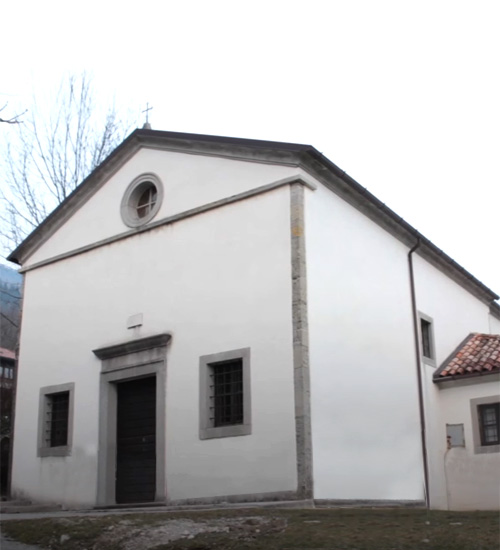SANTA MARIA ASSUNTA IN FAEDIS
The church of St. Mary of the Assumption stands on the site that has most likely been dedicated since ancient times as the main center of worship for the people who inhabit these places.
Renovation work that has taken place over the years has also revealed the presence of a structure, most likely a Roman temple (deduced from the discovery of numerous Roman coins), a sign that even from that era the place where the church now stands was dedicated to worship.
The present building was consecrated in 1934, after about twenty years of work. It was built on the 14th-century layout of the previous church. In excavations for restoration work, remains of a church, right in the center of the present one, dating from the 5th-7th centuries, were found.
With a single nave and a wide chancel and side chapels, the church has a scenic Baroque altar and some paintings and frescoes from the 16th century.
As much as 918 quintals of marble from St. Peter’s Basilica in Rome, donated by the Vatican, were used in the reconstruction work at the turn of the century.
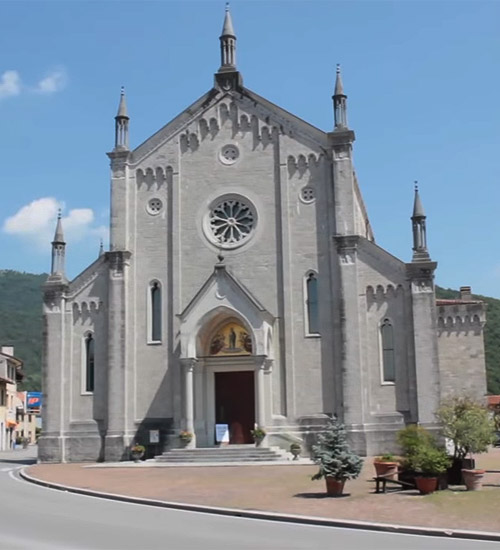
Important help in the construction of this church came from Bishop Luigi Pelizzo, a native of Faedis, who was a prominent figure in Italian ecclesiastical circles at the turn of the century.
The dedication to St. Mary of the Assumption has been documented since ancient times, and considering the fact that in addition to the parish church there are two other churches dedicated to Mary (Zucco and Collevillano) it can be deduced that since ancient times the people of these places were very devoted to the Blessed Virgin.
SAN MICHELE IN CAMPEGLIO
Studying the evolution of the cult of St. Michele in Friuli, it can be assumed that the origin of this church can be attributed to the period of Lombard domination, since these people were very devoted to St. Michael. But it was not until Soffumbergo Castle became the summer residence of the patriarchs of Aquileia (1240) that there was definite news of the presence of this church.
The 1976 earthquake damaged it considerably, and it has only been fully functioning again for a few years. Of particular interest is the mosaic depicting St. Michele placed in the apse, a gift of the Friuli Venezia Giulia State Police Association, by the painter Poz and executed by mosaicists from Spilimbergo.
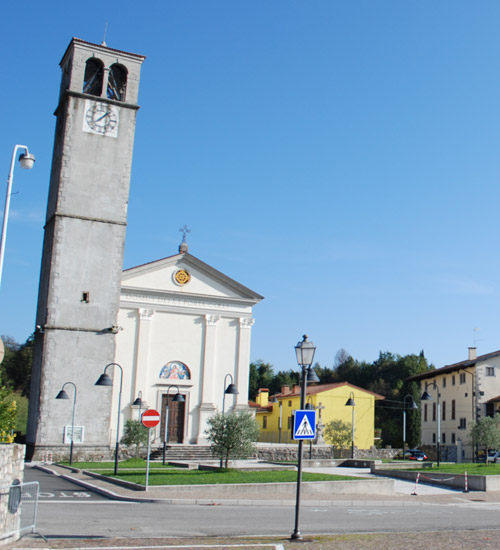
SAN PIETRO DEGLI SLAVI IN FAEDIS
The building dates back to the late 13th century and was partly rebuilt in the 15th century. The beautiful facade is from that era. The particular shape of the building and stylistic features mean that the church can be included among the buildings made by Slavic artists of the Skofja Loka school, particularly the circle of Andrea Lack. The interior wooden altar, of Renaissance cut, by the artist Giovanni Martini (1522) of the well-known Tolmezzo school, is currently located in one of the chapels of the parish church of Santa Maria Assunta.
The church is called “of the Slavs” because it was built around 1300 by the inhabitants of the mountain villages of Faedis, who were of Slavic origin, hence this appellative.
The small church is located within Borgo San Pietro on the road leading to Canal di Grivò
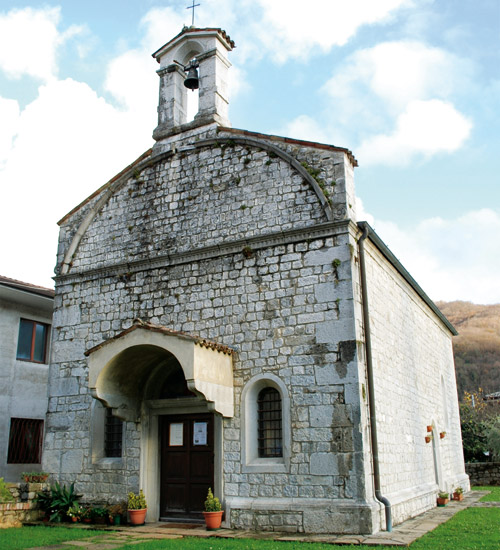
SANTA MARIA IN COLVILLANO IN FAEDIS
According to local tradition, the building dates back to the 10th century, but the earliest records of its existence are from the early 1300s. The present construction appears to be the work of the confraternity of St. Mary, founded in 1595, to which the church was entrusted.
Over the past fifty years, the church has been the victim of numerous thefts, the interior furnishings have been almost completely stolen, and only a few frescoes with figures of “Prophets” attributed to Gaspare Negro (1530) remain of significance.

MADONNA DI ZUCCO IN CASTELLO
According to local tradition, the building dates back to the 10th century, but the earliest records of its existence are from the early 1300s. The present construction appears to be the work of the confraternity of St. Mary, founded in 1595, to which the church was entrusted.
Over the past fifty years, the church has been the victim of numerous thefts, the interior furnishings have been almost completely stolen, and only a few frescoes with figures of “Prophets” attributed to Gaspare Negro (1530) remain of significance.
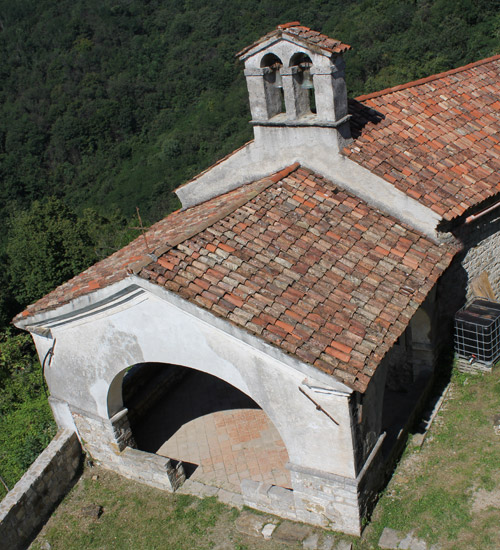
SAN ROCCO – FAEDIS
It stands on a hill about a hundred meters as the crow flies from the parish church. Originally dedicated to St. Giorgio, the church sees its construction probably during the period when castles were erected. It was enlarged and restored in the early decades of the 14th century, and in later years it was a destination for people devoted to the contemplative life. In the 16th century it became the seat of the confraternity of St. Rocco.
Inside, the wooden altar, probably from the 1500s, consisting of a triptych depicting St. Rocco in the center and St. Giorgio and St. Sebastiano on the sides is possibly the work of Giacomo Secante (1543-1585) or Secante Secanti (1571-1636).
Recently during restoration work, important frescoes from 1300-1400, from the school of Vitale da Bologna, who worked in Friuli during that period, came to light.
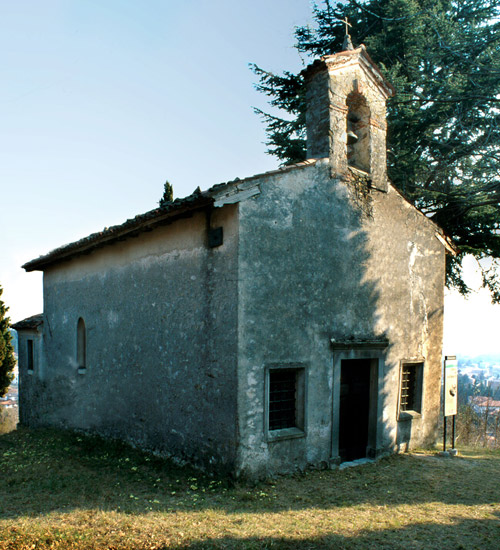
It is a cycle of frescoes dedicated to St. Giorgio, recounting his life, exploits and death. A sensational discovery, embellishing the artistic heritage of the Faedo area.
SANTA MARIA MADDALENA IN GRADISCHIUTTA
The building dates back to the first half of the 14th century. It is located just above the village of Gradischiutta, which means “fortified place,” and indeed in the area of the small church there is no shortage of such signs. Therefore, it is logical to assume that it was built to commemorate a destroyed fort. Otherwise, it would be difficult to explain why it was erected in such an inconvenient place since it can still be reached only by a path.
Until the 1500s, the chapel had a flourishing life: it was often the destination of pilgrimages by people from neighboring towns. Inside there is a fresco, rather ruined, with two overlapping layers of which the most recent may date from the 1300s, perhaps by the Vitale da Bologna school.

SANT’ELENA – COSTAPIANA
The church was built in 1470-72 by the residents of the neighborhood, with the help of Pedrosa and Costalunga. It was consecrated on May 23, 1473. The building is located on a small plateau near the intersection of the road to Canebola and the road to Costapiana.
The all-stone church, with a vast portico in front, is Gothic in style, and the exterior beauty is matched by the interior. The well-formed ribbed apse is perfect Gothic. The 17th-century wooden altar is in the Baroque style. S. Elena still well preserves its original structure.

SAN MARTINO IN RASCHIACCO
The origin of this small church can probably be traced back to the period of the Lombard occupation, when worship of St. Martin was widespread. Its foundation is thought to date back to the 1200s, but the earliest records of its presence are from 1328.
Inside is an 18th-century marble altar with statues. But attention is drawn to the altarpiece hanging on the left wall (now under restoration). It, dated 1748, is attributed to the Carnic painter Nicolo Grassi and depicts St. Martin on horseback giving charity; at his feet are St. Agata, St. Nicolò and St. Apollonia. The small church also preserves a 16th-century pallette depicting St. Lucia.
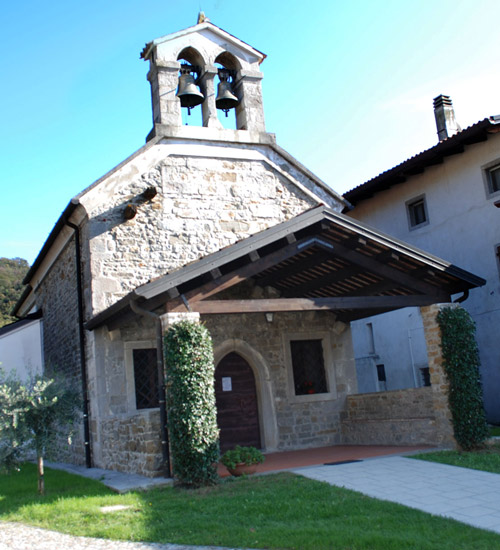
SAN ROCCO IN CANALE DI SOFFUMBERGO
The history of the small church of San Rocco is connected to that of Soffumbergo Castle. In fact, in the post-Ottonian period, it was customary to build a church inside the castle for the spiritual needs of the lords and the “underling” peasants.
Originally the small church was dedicated to St. Giovanni evangelista, it was possibly built between the 12th and 13th centuries. Instead, the present construction may date back to the mid-1500s. The dedication to St. Roch probably takes place between the 16th and 17th centuries.
The stone building features a rectangular hall and a square apse with a groined ceiling.
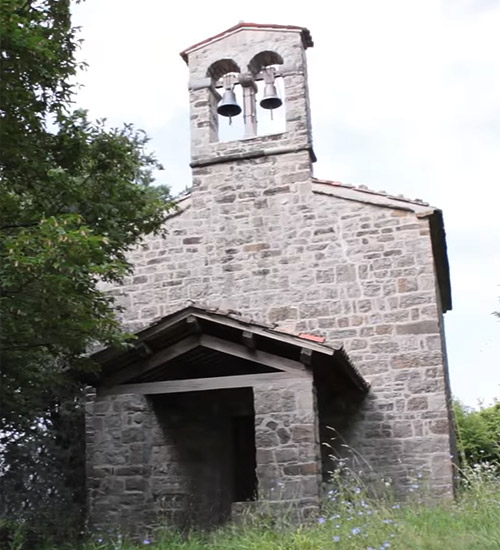
SAN GIOVANNI AND PAOLO IN COLLOREDO DI SOFFUMBERGO
The building was constructed at a time when the chaplains were no longer officiating in the Soffumbergo castle church a few hundred meters away as the crow flies (around 1420). Analyzing the building, it becomes clear that it has undergone numerous restorations over the centuries; in fact, features of sixteenth-century, and even eighteenth-century buildings are found. The church hall is rectangular with exposed trusses.
The altar is wooden, from the 1700s, with two cimasa side doors depicting Saints Vincenzo Ferreri on the right and Valentino on the left. In the niche in place of the altarpiece (the canvas depicts the Virgin and Child appearing to two saints-Giuseppe and Antonio of Padua most likely from the 18th century), stored in the sacristy awaiting a decent arrangement, is a statue of the Virgin and Child.

SAN PIETRO IN VALLE
The origin of this house of worship can be traced back to the 17th century, when the people of Bale asked for a new church to be built, at their convenience, the church of St. Lawrence (now disappeared, it was located on the same mountain not far from Bale) being inconvenient to reach.
The Valle Chapel was blessed on July 30, 1756 after many years of waiting and work. It recently underwent restoration, thanks to which the injuries caused by the 1976 earthquake were eliminated.

SANTA MARIA DELLE GRAZIE IN CANAL DI GRIVÒ
St. Elena’s Church was the church of Canal di Grivò for four centuries. As the country expanded, it became inefficient and inconvenient, so much so that there was a noticeable decline in attendance at services and catechism.
To remedy this in the late 1800s, first the large rectory was built, and in the years to follow the church and bell tower, so that Canal di Grivò too finally had a place of worship, and facilities for study and catechism. The construction work was made possible thanks to the sacrifices of the people of Canal di Grivò and the work of Don Quargnassi.
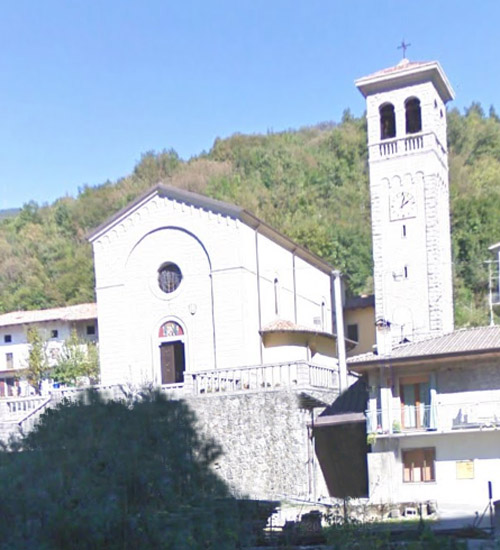
SANTA MARGHERITA REGINA IN COSTALUNGA
The present structure was built in 1905 on the original layout that would date back to the 16th century. The small church, in a state of neglect for many years is now being restored.
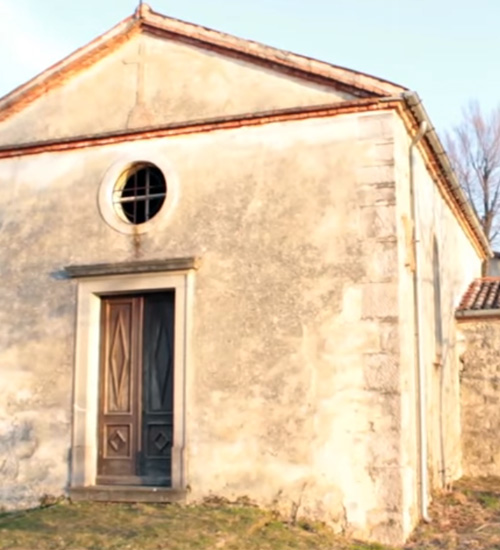
SAN LORENZO IN RONCHIS
The church in Ronchis originated in 1374 when it was erected by the Freschi Counts with local residents.
It must be assumed, however, that prior to the construction of the church, a chapel already existed in Rochis, since from the Catapan, of the parish we learn of bequests to the “Ecclesiae S. Laurentii de Ronchis.”

SAN GIOVANNI BATTISTA IN CANEBOLA
The first records of the existence of this church are from 1453. Its history has been a troubled one, there are records of two demolitions and reconstructions in 1737 in which it was also enlarged, and in 1871. After the 1976 earthquake, it was renovated due to heavy damage.

SANTA MARIA ADDOLORATA IN CLAP
In Clap there was a small “altarpiece” dedicated to Our Lady of Sorrows. Over the years in the inhabitants was born the desire to have their own church, as in nearby Porzûs. In the mid-1800s work finally began (1854-1857) and within a few years the Church of Our Lady of Sorrows was finished.
The church was consecrated in 1862, by Bishop Giovanni Maria Barengo. The Bell Tower had to wait a few more years was finished in 1888.
A Caused by the 1976 earthquake it was severely damaged and the bell tower largely destroyed.
The Church was restored in 1985, and on the base of the Bell Tower the old bells were placed on a metal structure.
Every year in September a festival called “il perdon de Madone” is organized, and on that occasion the statue of Our Lady is carried in procession.
